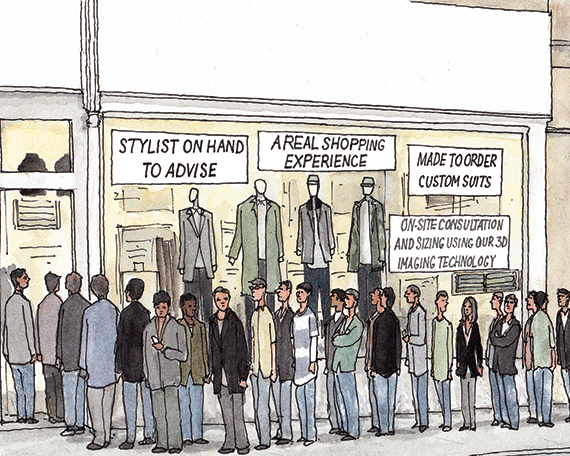The demise of Austin Reed and BHS is the latest episode in a series of high-profile insolvencies and retrenchments by the one-time pillars of the UK high street.
The insolvencies and related store closures have triggered a round of dire pronouncements about the future of bricks and sticks retail and the struggles that brands face to stay relevant in the face of stiff competition from online retailers. The sky is falling. It has been falling for some time.
For many of the landlords sorting through the future of Austin Reed’s 100-odd stores, the insolvency is a bad thing. It is a potential vacancy that may be a challenge to fill, a chunk of the rent roll missing and potentially a decrease in weighted average lease term.
The owners of the best streets and schemes, however, are likely to react differently. They are relieved. In the UK’s highest-traffic retail locations, the BHS and Austin Reed stores were often an eyesore. They were brands that did not fit and could not keep up with the retailers surrounding them. In these locations, where landlords take a proactive approach to curating tenant mix, the demise presents a chance to freshen up the retail line-up and introduce something more interesting that contributes to the mix, drive footfall and protect the long-term viability of the real estate.
While there are a number of likely contributors to Austin Reed’s downfall, one often-cited issue is the in-store experience. Austin Reed stores were compartmentalised in a traditional way by product type; meaning consumers were confronted by a wall of shirts, a few tables of ties arranged in rainbow wheels and long racks of uniform suit jackets.
Compare that to the shopping experience on Thread.com, where step one of the online experience is to answer questions about your budget and what occasions you need clothes for. Shoppers are paired with a stylist who sends weekly e-mails with five outfits pairing items from various retailers to form a look. There is no need to helplessly circle the wheel of reddish-orangish ties – the site has suggested one for you and the shirt to match.
The experience that a site like Thread is providing is nothing new. It effectively acts as a personal stylist, using algorithms and purchase history data to make suggestions. One of the things Austin Reed failed to do was provide an in-store experience that was more compelling. Which is a shame – when it comes to buying something like a suit, the offline experience should win.
That said, the best model most likely lies somewhere in-between. Take Lanieri – an Italian brand offering made-to-order custom suits with 10m combinations of fabrics, linings and details. It primarily sells online, but has showrooms offering the full tailoring experience in a few key locations. It has also made appearances in space listed on Appear Here to offer on-site consultation and sizing using its 3D imaging technology.
The next generation of brands has learned from the likes of Austin Reed. Lesson one: don’t hamstring your balance sheet with 100 long-term upwards-only lease liabilities. Lesson two: provide an experience in-store that enables a value exchange and gives people a reason to stop by.
Peter Lennon is in charge of landlord partnerships at Appear Here











